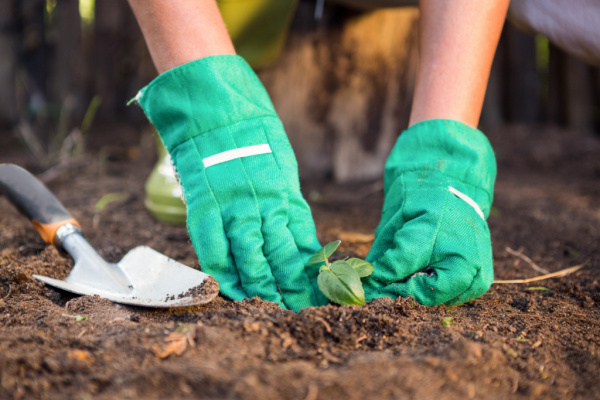
Don't you think it's pretty cool to serve up a salad for your family with the vegetables you picked just minutes ago in your own garden?
Have you ever considered starting a vegetable garden? In recent years, we've seen an increase in the number of moms (yes, modern moms like YOU) turning to their own gardens to grow their own vegetables to save money, eat healthy foods, and live a more holistic lifestyle overall. Some say that gardening is even a stress-reliever (although when I think about the trials of my first-time gardening experience, I'm not so sure I'd agree).
The point is, however, organic gardening is enjoying a level of popularity like never before, and raised gardening seems to be the popular choice. A quick stroll around a few of the backyards in your neighborhood might reveal small board or stone sided rectangles in peoples' backyards housing mini vegetable gardens. That’s called “raised bed” gardening, and it’s actually a GREAT method for breaking into gardening. As with all new hobbies, there are many considerations (and for the record, we are NOT experts on raising vegetables. In fact, we’re still trying to figure out how to raise our kids!), but we wanted to give you some information to get you started.
A raised bed is a small patch of land that is fenced in by either wood, stone, cinderblock or brick. The beds are built atop the native soil or grass that’s already in your yard. Yes, this means no digging! Raised bed gardens can be built with a variety of materials, and you can find them pre-built at local home & garden stores like Home Depot, Lowe's, and Ace Hardware.
Decide on the best place for your garden. Many vegetables and herbs require a lot of sunlight, so a bed for these plants should be placed where it will get sun most of the day. My first raised garden bed was set up in a corner of my yard, easy for me to get to, but well out of the way of active children. These days, I'm using the City Pickers raised garden bed (I found them at Home Depot) with rolling casters, so I can move them in and out of the sun as I see fit.
Once your container is set up, you simply pile up the soil and ingredients to several inches in height and go ahead and plant the vegetables and herbs of your choice, using either seeds or seedlings. Find both outside of your local grocery store or in the garden section of your favorite home improvement warehouse.
Raised bed gardening gives you the opportunity to avoid problems with your yard's native soil and instead build up a rich and fertile base for your plants. Plus, you can make adjustments with compost and fertilizer very easily. (The soil in my yard is very clay-like, so raised bed gardening was a hassle-free option for me.)
Don’t ask us any questions, that’s ALL we know, but we thought you’d like to give it a try this year. Some vegetables, like tomatoes should be planted before the last yearly frost date (consult Google to find out what this means!), but don’t delay. By the time you do your research, gather your materials, and convince your husband to put a funny looking wood border around a patch of his carefully manicured yard, you might have missed the growing season for your preferred veggies. Have fun!


